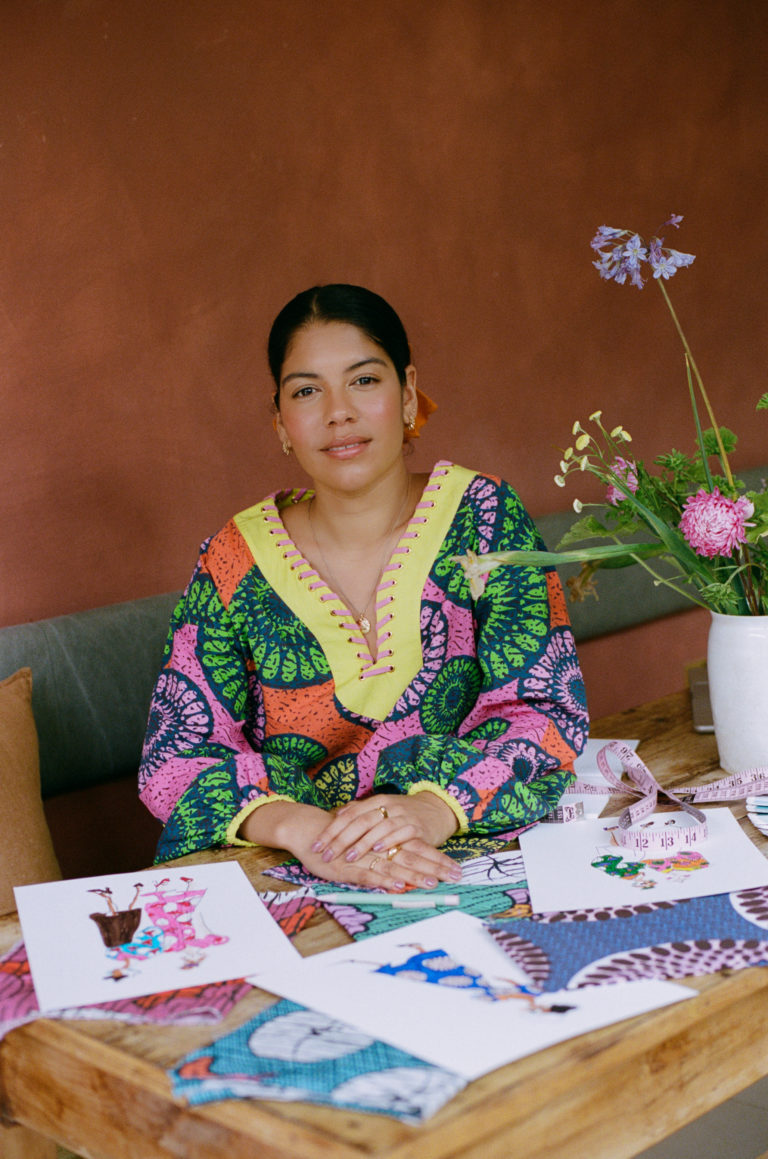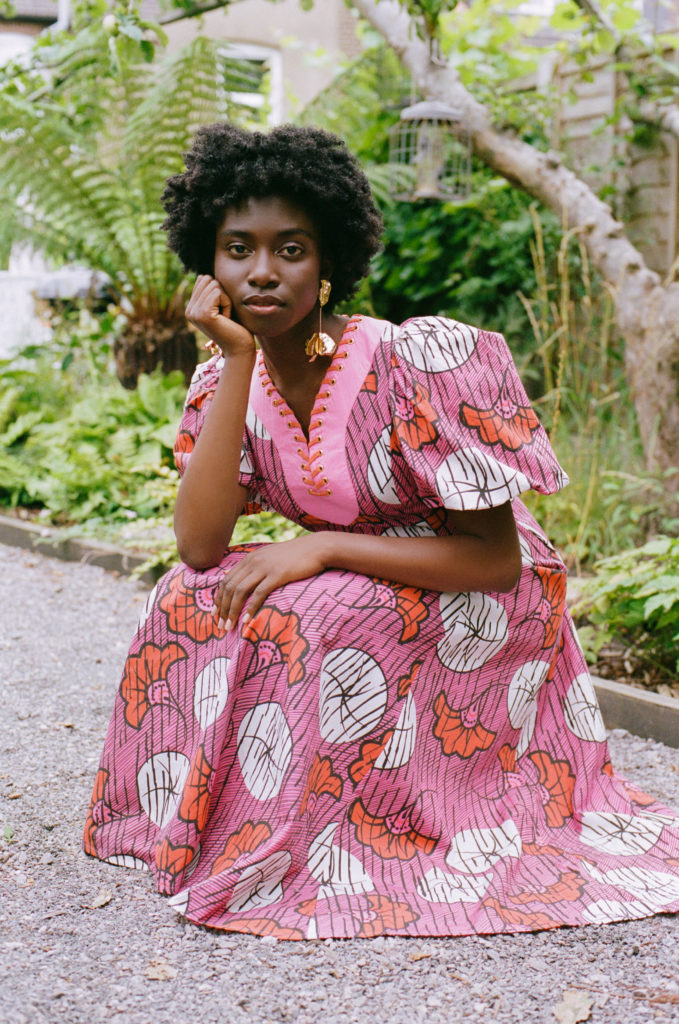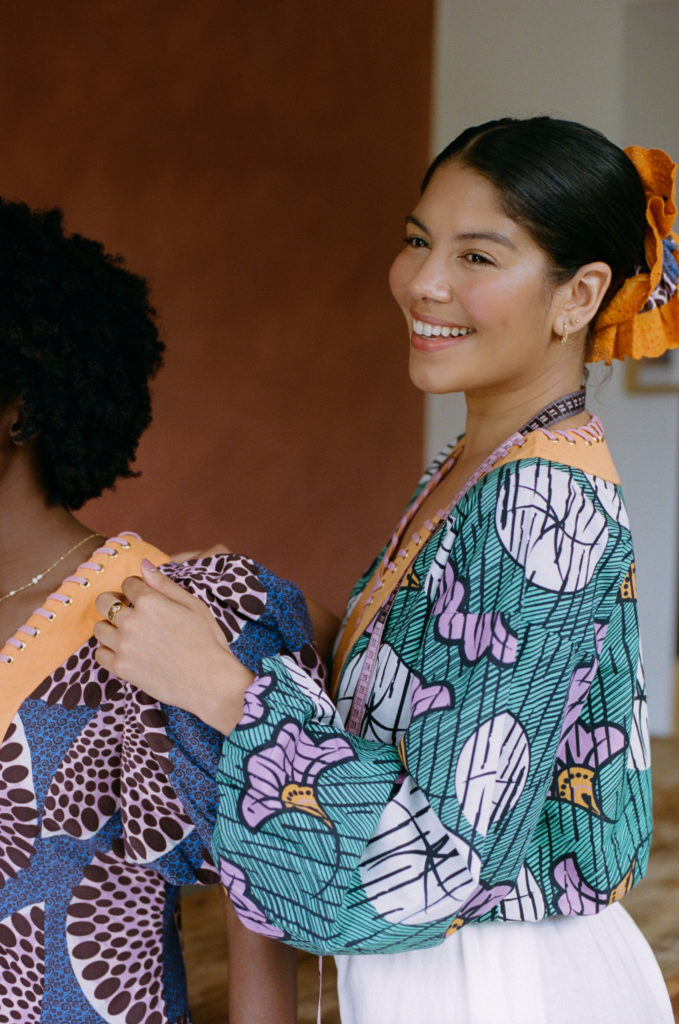MBA Collection Launch: A Sustainable Journey Rooted in Ghanaian Heritage & Joyful Designs
Bianca Foley
Today we are chatting to Annie Phillips, a recognised British seamstress celebrated for her vibrant sustainable designs. With a background in upcycling, Annie repurposes discarded materials to create pieces that tell stories, bridging the gap between function, design, and culture. Embracing her Ghanaian heritage, this collection celebrates cultural creativity with her inaugural collection for the launch of brand Made By Annie. Read on as as dive into how she uses her culture and links to her grandmother, to create a collection that is vibrant and joyful.
What inspired you to start “MBA” and how does the collection “Nana’s Closet” reflect your personal heritage and creative vision?
I started my brand after gaining some freedom off the back of winning The Great British Sewing Bee and quitting my job in the fashion industry, to not only reflect on what I wanted to do with this opportunity and put out into the world, but also think about the world I want to be apart of. I quickly realised that my vocation was to advocate for sustainability and authenticity, breaking free from the constraints I had in my corporate fashion career.
Having studied and learnt so much around sustainability over the past year, I’ve met so many pioneers leading the way for circularity and positive change, but when it comes to brands I find it hard to find responsible brands that resonate with me – celebrating culture, heritage and most importantly joy in their designs.
One thing that stuck out to me so vividly was my research into Kantamanto Market in Accra, the capital of my grandmother’s birth country Ghana. This is a place most of our textiles end up, usually to be repaired, upcycled and then resold. However more recently the textiles from fast fashion are so poor in quality that nearly 80% has to be completely discarded as it arrives as waste, that there is nothing they can do with it, and it just pollutes their community further.
There were so many elements to this that resonated with me, my values and my heritage that I felt it was important to build something that not only raises awareness about waste, but also captures the vibrancy and joy of Ghanaian culture. It took over a year to build this brand, prioritising circularity, longevity, and sustainability through meticulous fabric selection and collaboration with the right partners.
Could you delve into the sustainable practices embraced in the creation of the MBA collection, and how does this commitment to environmental responsibility influence your designs?
Firstly, I want to just put it out there that we are not a sustainable brand as I do not think a brand can be sustainable due to the sheer fact we are making clothing for consumption. To put it simply there are enough clothes out there to dress the next 6 generations, but we are a brand that is responsible and ethical in how we make our clothes.
The first thing that was important to me was to try and have as little waste as possible in the process of making the designs. We use ‘nearly’ zero waste patterns when cutting the garments, and the excess fabric we do have (mainly from the dresses) we transform into scrunchies.
Choosing fabrics posed a challenge; mainly because traditional Ankara fabrics lack transparency about their sourcing and production processes. Therefore, we insisted on biodegradable materials with organic cotton, which reduces chemical usage and water consumption. Since organic cotton Ankara fabrics were unavailable, we had to create our own fabric.
Our research led us to digital printing, which consumes less water and allows us to tailor prints to fit garment pieces, reducing fabric waste. Additionally, we incorporate remnant fabrics and hand-dyed second-hand laces for neckline trim to promote circularity and minimise waste without compromising design.
We maintain low production quantities to prevent overproduction and excess waste. Our pieces are intended to be thoughtful purchases, designed for longevity, and cherished for years, as we are committed to avoiding landfill contributions. I wouldn’t be making anything at all if I thought it would end up in landfill.
Can you share the significance of your Ghanaian heritage in the “Nana’s Closet” collection; and how do you incorporate West African cultural elements into her designs?
My grandma, Monica, taught me the art of sewing at around 8 years old; and although it may have been a simple skill to her, it became my ultimate source of motivation in embarking on my career. Born in Mampong, Ghana, my grandma continues to be the heart and soul of our family, radiating a contagious energy brimming with self-assurance and gracefulness. Her influence has served as the foundation of my inspiration, driving me to create garments that empower and nurture confidence within.
One of my first designs at sewing bee was again inspired by my Grandmother and the one comment that stood out to me was ‘you’ve bought a bit of Ghana to London’ and that’s essentially what this brand is about. Bringing some flavour to these concrete streets! African style transcends clothing; it embodies culture and life itself. Our in-house-designed prints draw inspiration from the Ankara wax prints I admired in my grandmother’s closet, radiating vivacity. These memories of her wardrobe evoke nostalgia, shaping the colour combinations, textures and overall aesthetic of the brand. They represent family, safety, joy, and colourfulness.
The thing that truly sets these designs apart for me is their unique blend of African silhouettes and London influences, which resonate with my own identity. There’s something about them that effortlessly captures the relaxed African style while still remaining perfectly suitable for my UK wardrobe. For example the incorporation of the ‘bib’ element, is inspired by the traditional dashiki and crafted using recycled laces to symbolise the surplus of fast fashion waste left to pollute West African markets. Meanwhile, the puff sleeve, now a common feature in many British women’s wardrobes, adds a touch of contemporary relevance to the overall design.
Tell us more about the intricate craftsmanship and storytelling behind each garment in the collection; and how you draw from your memories of your grandmother’s closet to create a sense of celebration and joy?
In this new chapter of my career, I have dedicated my platforms to educating, particularly the younger generation, about the processes involved in creating clothing. My primary aim has been to shift the prevailing perception that clothing is disposable. Sewing is an artistry – a craft that transforms a simple piece of cloth into a functional and expressive artwork. It is of supreme significance to me that our garments are crafted with a deep consideration for our planet and the essence of artistry.
As a seamstress, I possess the knowhow to ensure that the clothes we create endure the test of time. I have been uncompromising on insisting durability into our designs – strengthening stitches at stress points, conducting wearer trials for each design, and meticulously inspecting every piece before it leaves our hands. I am entirely confident that we are committed to producing long-lasting garments.
Drawing a connection to my grandmother’s ethos, her resounding mantra, ‘nothing but the best,’ resonates within our brand. Even when sourcing second hand materials, our fabrics are fortified, organic, and inherently beautiful, ensuring that wearing our pieces imbues you with a sense of quality. Our silhouettes celebrate body positivity and femininity, with the hope of inspiring you with the same confidence my grandmother instilled in me.
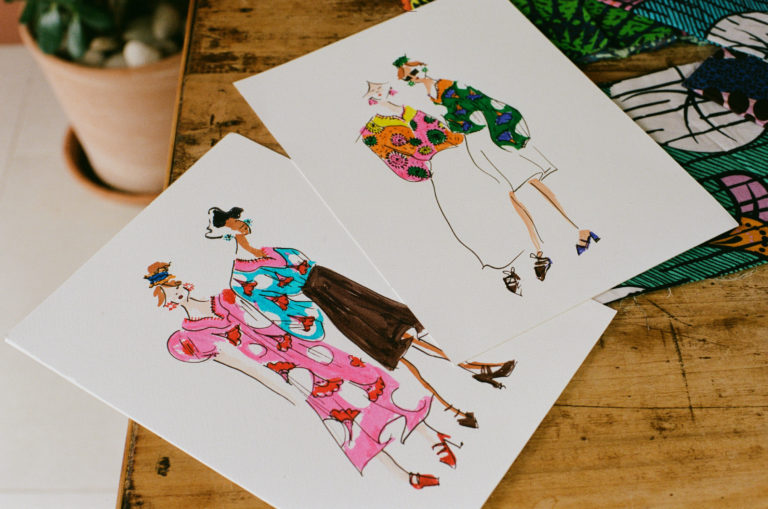
Although, as you’ve said, you’re not a “sustainable brand”, you focus on the importance of conscious consumerism and sustainable fashion. How does the limited availability of the MBA collection contribute to the unique value of each piece and encourage a more thoughtful approach to fashion?
By limiting the availability of each product it fundamentally prevents the possibility of over consumption as it is just not possible with small runs. My objective has always been to inspire the women who follow my journey to prioritise quality over quantity and to analyse their consumption habits. This approach, in turn, seeks to motivate the women who shop with me to value these pieces and create lasting memories for years to come.
I think we need to engage in the economy with more awareness of how our choices impact the environment and society as a whole. As a conscious consumer, every purchase reflects your core values and is an opportunity to vote for the world you want to see, and support brands that have those same values.
I am so grateful for the community on my social media platforms – like-minded women unite with a shared commitment to the well-being of our world. Without the support of this community of women, I wouldn’t have achieved the position I hold today. Therefore, it was paramount for me to reciprocate by establishing a brand that mirrors these shared values and collective mindset.
You can shop the collection here at https://www.madeby-annie.com/.
Share This Story
Related Posts

How Circular Threads Is Transforming Preloved South Asian Fashion For Women
Discover how Circular Threads is revolutionising preloved South Asian fashion for women in the UK. Learn about the sustainable fashion movement led by Anoli Mehta and join a community committed to style and sustainability.

Revolutionise Your Wardrobe Using Tiffanie Darke’s ‘Rule of 5’ for Sustainable Fashion
Discover Tiffanie Darke’s groundbreaking “Rule of 5” and transform your mindset on sustainable shopping. Explore the impact, challenges, and practical tips for adhering to this directive, revolutionizing your approach to fashion.
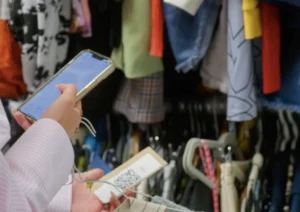
Hudi Charin’s TikTok Journey, Reshaping Fashion Trends and Confronting Overconsumption
TikTok has emerged as a powerful platform for influencers to share their passions and drive meaningful conversations. One such advocate for sustainable fashion is Hudi Charin, whose TikTok journey on @thethriftythinker is reshaping perceptions of overconsumption.
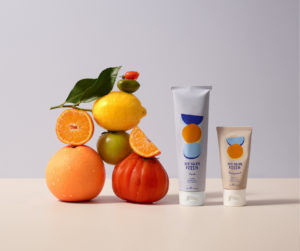
Beauty Interview with Danielle Close, My Skin Feels Founder
Beauty Editor Alice Hartwell speaks to My Skin Feels’ Founder Danielle Close on the benefits of food waste in skincare – for our skin and the planet!

